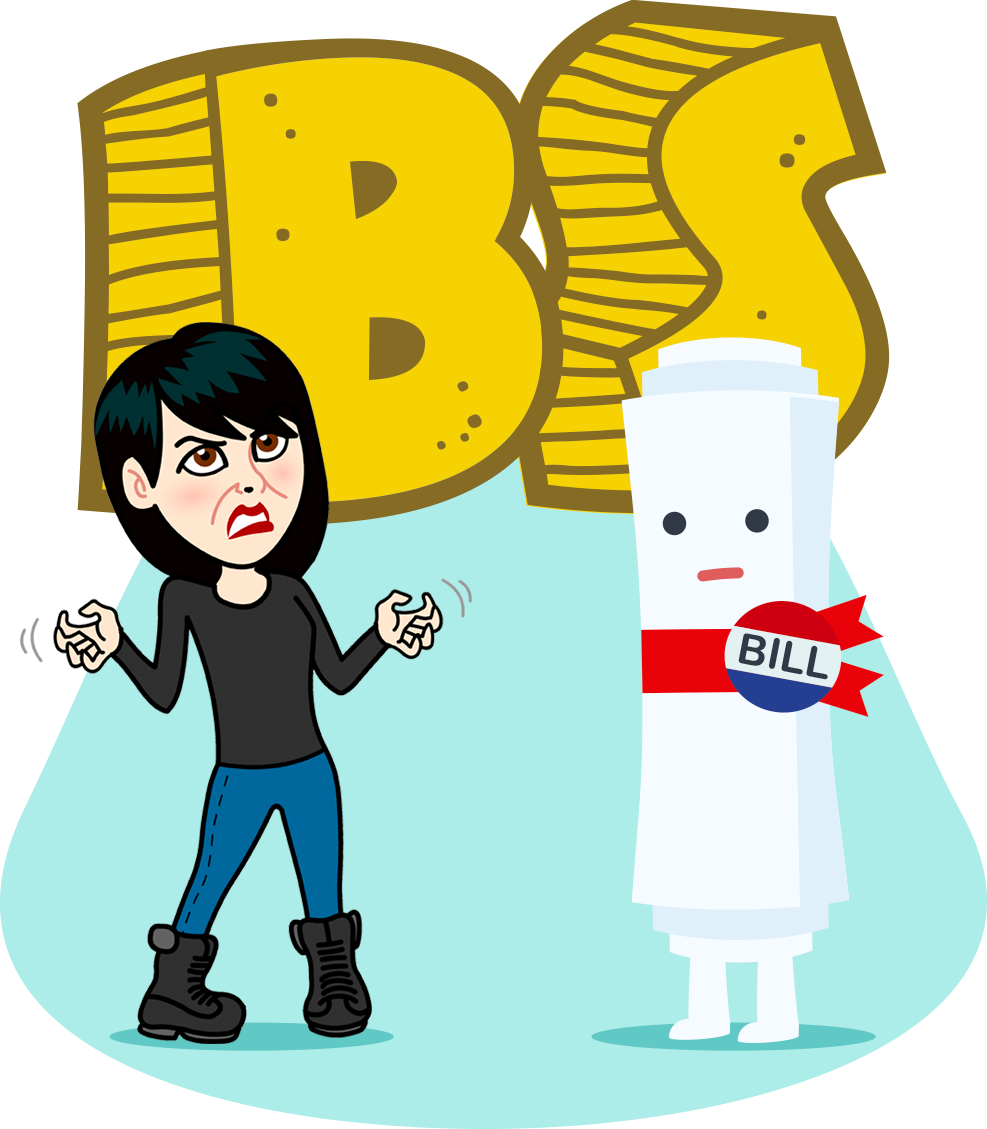
Forget Schoolhouse Rock –
This is Really How a Bill Becomes a Law
For a lot of CreativeFuture members, the Washington legislative process is not something you think about every day. But what Congress does – or doesn’t do – has a huge impact on our rights as creatives.

So for those of our friends and followers whose main source of information about how a bill becomes a law is the Schoolhouse Rock episode we all remember – I’m here to tell you that it was A TOTAL FANTASY.
There’s no dancing or singing or happiness. None. Whatsoever. It’s actually exhausting.
Really.
So why are we talking about this? Well, our job is to mobilize the creative community to speak up about the value of creativity, the importance of copyright in protecting creativity, and the massive harm caused by the global theft of our creative works.
A lot of the time, this means we focus on educating people and getting them to sign petitions and appear at conferences and stuff. And sometimes, it means we get our butts on an airplane and fly to our Nation’s Capital, beautiful Washington, D.C. We often bring creatives with us to meet with important elected officials. And we talk with them about how essential copyright protections are to the millions of people who depend on them to make a living.
I’ve been to Washington a number of times since I took this job, and I’ve learned quite a bit about how Washington works. And what a learning curve it’s been! I want to share some of what I’ve learned with you.
Think of it as a gift. Maybe not what you were expecting, but it’s the thought that counts!

Let’s start with a basic fact for those of you who, like me, were dozing off in civics class and don’t know the difference between the House of Representatives and the Senate.


There’s a few other differences and responsibilities that are assigned specifically to the House and the Senate, but that’s not important right now.
Now let’s pivot back to how a bill becomes a law. I’ll try to make this as fun as possible but I can’t make any promises because the legislative process is long, tedious, frustrating, unfair, and boring as shit. (But I do love my job. Seriously.)
A bill starts out as an idea, but not in the “this street should really have a stop sign” sense like the Schoolhouse Rock video depicts. The ideas tend to be more complicated – so let’s take something like: “Copyright infringement is really threatening the jobs of millions of Americans – we should do something to protect jobs.”
Let’s call this Bill (capitalized because we’re talking about a specific bill now) H.R. 9999 – all bills are given numbers like this. (“H.R.” means the bill started in the U.S. House of Representatives. If a bill starts in the Senate, the number is preceded by an “S.”)

To get this done, you have to have roughly 3,000 meetings (that is a complete exaggeration, but I want you to get an idea of the unendingness of it all) and phone calls with Members and their staff.
To be fair, 10-14,000 bills are introduced in Congress every two years and only about 1-3% become laws.
So they and their staffs have to try to get up to speed on every one those. It ain’t easy. And they can get really distracted.

First, the chair of the committee has to be willing to bring your Bill up for a vote. And every single Member on a committee gets a vote. And every single Member can also ask for changes (amendments) to the Bill. If your Bill is going to survive a future vote in the House or the Senate, it sure helps if the committee vote is definitive – which means hundreds (again, a slight exaggeration, but only slight!) more phone calls and meetings with each Member on the committee. They want to know why it matters to them and to their constituents.
Imagine having to convince a Congressman from a rural district in Idaho that he should vote for a bill that will primarily help people in a colleague’s district in Los Angeles. It’s a tall order and it takes a lot of education, discussion, and negotiation.


Let’s assume our Bill (H.R. 9999, remember?) started in the House (bills can start in either the House or the Senate). It got assigned to a committee, and the committee may have had one or more hearings, bringing in officials from other areas of the government or expert witnesses to share their expertise.
At some point, the committee may schedule a vote on the Bill (they don’t have to, they need to be really motivated). If you’re lucky enough to have a committee vote to approve your Bill, it goes to the House for a general vote.
The House, otherwise known as the Committee of the Whole, gathers Members from each party, in favor or opposition, to debate the merits of the Bill. Again, not every bill gets to a vote, even if it passed the committee. But let’s assume we’ve worked really hard and got lucky and our Bill, good old H.R. 9999, is “coming to the floor of the House.”

There’s usually a debate. Some people (your friends) will speak up for the reasons they support the Bill. Other people (not your friends, at least on this issue, though they could be your friends on the next issue) will speak up for why they oppose the bill. And then, they vote.
For most bills, a simple majority is needed in the House to pass the bill and send it to the Senate – this means that 218 Members of Congress need to vote “yea” instead of “nay” to get your Bill to the next stage. 218 is the magic number if the whole House is voting, but in general you just need a majority of those who are present and voting.

But you might ask, how do Representatives know the details of every single bill that comes to the House floor? Well, they don’t. Representatives have large staffs that speak to people with interests in particular bills that are coming up for a vote. They will then advise the Member of how they should vote and why.

Another way that Members of Congress and their staffs get the information they need is through advocates who represent the interests of organizations ranging from nonprofits to corporations to religious institutions to labor unions and just about every other kind of interest. Some of these representatives are called lobbyists. (Actually, in truth, they are all “lobbyists,” but the term has a special legal definition.)
Many people hate the idea of lobbyists – but we can all be lobbyists, and we are all represented in many different ways by lobbyists. Basically, a lobbyist is an advocate hired by a group or organization to present their viewpoints to Members of Congress and their staffs. There are lobbyists you may agree with and those that you might disagree with, but they all have the same basic job to do – convince elected officials that they are representing the best interests of their constituents.

PLEASE NOTE: As an individual and resident of the United States, you have as much right to talk to your Representative and/or Senator as a “professional lobbyist” does. But no matter how much lobbying is done, the decision ultimately rests on the shoulders of your elected official.
Look, not everyone knows about everything, unless of course you’re a teenager. On the Hill, people who want laws passed need to go through the tiresome and tedious process of educating elected officials and their staffs about the intricacies of their bill. This process will find you having the same conversation hundreds of times – it takes an endless amount of running around and explaining your position time and again and again and again. That, my friends, is lobbying.
One can have literally hundreds of meetings where you explain, over and over, why copyright is important and why it matters and why a specific bill will allow millions of people to protect their property. And then, months later, you can walk into the same office and have the same discussion, maybe with a new staffer because the other one just moved on to a new job. And then again and again until you cannot stand the sound of your own voice.
And now, let’s say you’ve made it this far. Out of the thousands of bills that enter the House, H.R. 9999 is part of the tiny percentage that gets passed. Now what? It goes all the way across the Capitol to the Senate, where it is again assigned to another committee to review prior to a vote.




Here we go again. Yes. All over again. The phone calls, the meetings, the “please don’t make me explain it one more time, because I’m losing my voice (and my mind).”
In most cases, but not all, the bill that gets introduced in the Senate will be identical to the bill that passed the House. Sometimes, someone in the Senate will introduce their own version of a bill that passed the House. Once the bill passes the relevant Senate committee, it goes to the floor of the Senate, is debated, and ultimately voted on. Again, in most cases, a simple majority is needed – meaning 51 votes.


But there’s a HUGE difference between the House and the Senate. The House was designed to encourage “fast” majority voting on bills, while the Senate encourages debate and examination to a greater extent. And in the Senate, it can get ugly.
Now remember, there are 100 Senators in the U.S. Senate and it only takes one Senator to derail your Bill if they feel that you’re wrong. Why? Mainly because of the filibuster. A filiwho?

Let me put this out there: filibusters suck if you’re a Senator, or work for a Senator, are married to a Senator, or even know a Senator. A filibuster allows any Senator to speak about any subject whatsoever for as long as he or she wants. It’s a tactic used to delay votes and it’s a really awful thing to experience. If you’ve ever seen Mr. Smith Goes to Washington or Scandal, then you know exactly what this is.
On the other hand, filibusters are actually a great tool to stop bad legislation from becoming law. (Of course, the term “bad legislation” depends on whose side you’re on.)
Filibusters are so awful for everyone involved that even the threat of a filibuster can kill a bill before it’s even voted on.
But there is a tool the Senate can use to stop a filibuster from ever even happening. It’s called invoking cloture.
Want to remember what this fancy word means? Think of it as closure – as in the closure of the mouth of the Senator that’s filibustering.
If three-fifths of Senators vote to invoke cloture, then the filibuster is over. But if they can’t get 60 Senators on board, then they better hope that the filibustering Senator has a really small bladder.
Alright, so the Senate votes on and passes S. 5001. Assume that the Senate didn’t change a single word because if they did it needs to go back to the House of Representatives – and I refuse to even discuss that possibility! Well, I should, but the bottom line is it just means more back and forth between the House and Senate.
But not this time. Lucky you: the White House is the next stop!
All bills must be signed by the President in order to become laws.

A special power is given to the President that can again kill your Bill. It’s called the veto – and it’s basically a special match that incinerates your Bill and it’s dead forever, because coming back from a veto is next to impossible. So much so that lawmakers in the House and Senate will often construct bills that are in agreement with the President’s policy positions so that they can avoid a veto.
Now the truth is that a veto CAN be overridden – even though it’s EXTREMELY rare. Once a bill is vetoed, it comes back to the Senate and House for one last gasp. 67 Senators, out of a possible 100, and 2/3 of the House of Representatives would need to vote to override the veto – then the bill becomes a law. And all of these Members of Congress need to be convinced that overriding the President’s decision is the right thing to do – which again would take phone calls, meetings, and permanent laryngitis.
As you can see, it’s REALLY hard for an idea to become a law. It takes a lot of strategy, compromising, tenacity, perseverance, and hard work. And even then, only 1-3% of all bills actually become laws. (I know I already said that! But I want you to understand how hard this is!)
And even if they become laws, they then have to overcome bureaucracy, implementation, and all kinds of logistical challenges to be effective.
Okay – take a deep breath and be proud of yourself because you now know more about the legislative process than you ever cared to know. Gold star for you!




